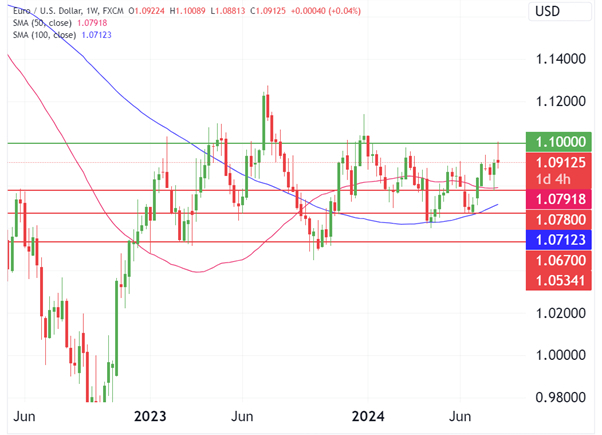Aug. 5, 2024 was an extraordinary day for traders across the globe. The CBOE Volatility Index, commonly known as the Fear Index, skyrocketed to its highest level since March 2020, signifying heightened market anxiety. Some investors have labeled this day “Second Black Monday,” drawing a parallel to the infamous stock market crash of 1987. This time, a wide array of volatile assets experienced significant declines:
- The Japanese stock market index plummeted by 12%, its steepest fall since 1987.
- The US S&P 500 dropped by over 3%, reaching a three-month low.
- The cryptocurrency market suffered heavy losses, with Bitcoin down 14% and Ethereum plunging by 24%. Other altcoins faced even more severe declines.
Top Forex Brokers
Additionally, the USD weakened, with the EURUSD’s exchange rate testing a high of 1.1000.
The widespread panic that rippled through the market was driven by several factors.
First, the Federal Reserve made no changes to its monetary policy during its meeting on July 31, leaving investors wondering whether an interest rate cut is on the horizon.
Second, the Bank of Japan raised its interest rate to 0.25% — an expected move that strengthened the Japanese yen but immediately pulled the Japanese stock market down.
Finally, the nonfarm payrolls report showed that 114,000 payrolls were added in July, which is lower than the expected 176,000. This data signaled the need for a Federal Reserve rate cut and raised questions about a potential recession due to a weaker US dollar.
Combined, these factors created extreme volatility across the market, the likes of which haven’t been seen since the Covid-19 outbreak.
What to expect next
While this unusual day in the market was followed by several days of recovery, analysts kept wondering whether it was a good time to invest in risky assets.
Now, market participants are beginning to anticipate a rate cut by the Federal Reserve during its meeting in September. Prediction market platform Polymarket indicates that the likelihood of a rate cut that’s more than 50 basis points has exceeded 55%. This would weaken the US dollar but boost demand for stocks and other risky assets, including crypto.
For major pairs such as EURUSD, its long-lasting consolidation period would likely come to an end. As a result, the pair’s key resistance of 1.1000 and the support at 1.0780 will be in focus for traders.
US stocks and cryptocurrencies will likely benefit from the market’s expectations of a Federal Reserve rate cut. Bitcoin may also move based on the outcome of the US elections.
How to prepare
Aug. 5, 2024 proved that any day can be a worrying one for traders, especially for those who are unprepared. That’s why Doto has gathered some tips that could help you survive the market’s instability.
- Diversification is key. During times of extreme volatility, trading a diversified portfolio of instruments can be a lifesaver. The events of Aug. 5 reminded traders that putting all their eggs in one basket — whether it’s stocks, cryptocurrencies or any other asset class — can lead to substantial losses. Diversifying across different asset types, geographies and industries helps mitigate risk. Even when the market seems insurmountable, diversification remains a prudent strategy.
- Risk management matters. Market crashes underscore the importance of risk management. Traders who had well-defined stop loss orders or position-sizing rules were better equipped to limit losses. Risk management isn’t just about protecting capital, it’s about preserving one’s own emotional well-being too. Setting clear risk parameters and sticking to them — even when emotions run high — is crucial.
- Emotional resilience is a superpower. Fear and panic can drive irrational decisions that lead to financial ruin. Traders who panicked and sold off everything during the crash likely regretted it just a few days later, when multiple assets had already recovered. Emotional resilience — that is, staying calm, assessing the situation objectively and avoiding knee-jerk reactions — is an invaluable skill amid a volatile market.
- Understand market interconnections. The interconnectedness of asset categories across the global market is more evident than ever. The forex, bond and commodity markets all influence each other. A weakening USD can impact stock markets across the globe, while geopolitical events can affect commodity prices. Traders who understand these relationships can make more informed decisions. Stay curious and keep learning about what makes the market tick.
- Long-term perspective prevails. Market crashes can be gut-wrenching, but they’re part of the trader’s journey. Trading on a spike in volatility is risky without taking the long-term trend into account. Resist the urge to check up on your trades every minute, and don’t give up.
Remember that a crisis is a time of opportunity for those who trade smart. With Doto, you can always use market volatility to your benefit as long as you keep to your risk management strategy.

